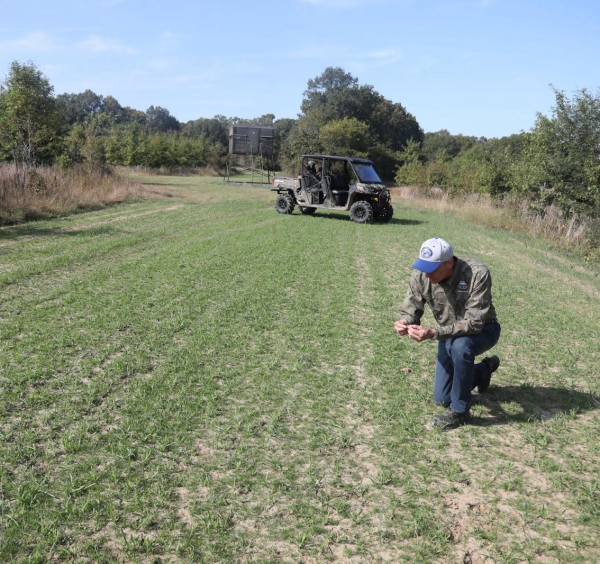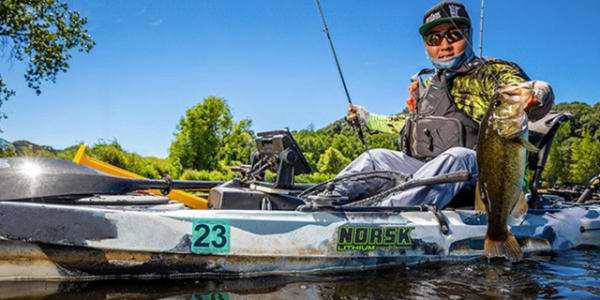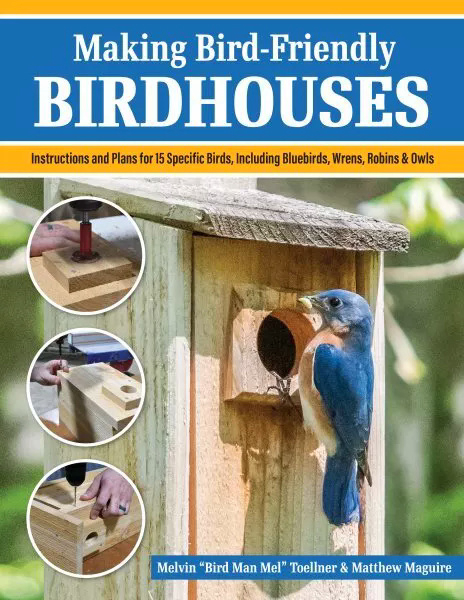Cutting Corners – Planting No-Till Food Plots by Todd Amenrud
 I don’t really care for the terms “no-till” or “no-plow” when it comes to food plot products. I believe it gives many newbie’s a false sense of hope. It tells them that it’s acceptable to cut out an important step in the planting process and everything will be OK. The problem being – these types of products are often sold to those first-timers or food plot farmers that don’t have the equipment necessary to complete all the plantings steps according to the book. The more steps you skip in the planting process, the more you will sacrifice in attraction, yield and palatability to a point where you have a total failure. Is it possible to plant a food plot without working/turning the soil? Absolutely; however, if you’re going to skip this very important action, some of the remaining steps become much more essential and must be completed correctly.
I don’t really care for the terms “no-till” or “no-plow” when it comes to food plot products. I believe it gives many newbie’s a false sense of hope. It tells them that it’s acceptable to cut out an important step in the planting process and everything will be OK. The problem being – these types of products are often sold to those first-timers or food plot farmers that don’t have the equipment necessary to complete all the plantings steps according to the book. The more steps you skip in the planting process, the more you will sacrifice in attraction, yield and palatability to a point where you have a total failure. Is it possible to plant a food plot without working/turning the soil? Absolutely; however, if you’re going to skip this very important action, some of the remaining steps become much more essential and must be completed correctly.
Planting a food plot for whitetails or turkeys without working the soil can be done, but you must choose the right crop. You’ll need to use small seeds that have a planting depth of ¼ inch or less. If you aren’t working the soil to prepare a deeper seedbed, you’ll have to utilize what Mother Nature left you. So that means large seeds like corn, beans and peas with a planting depth of an inch or more will likely need to be passed on unless you do have an implement that will bury the seeds the appropriate depth, or an awful lot of “elbow grease.” Instead, small seeds like clovers, brassicas, chicory, alfalfa and some cereal grains will need to be your choices.
My two top choices would be Deer Radish for an annual and Clover Plus for a perennial. BioLogic’s radishes are both, one of the best plants that I’m aware of for improving the soil and one of the most attractive plantings I’ve ever witnessed whitetails “attack.” Clover Plus is easy to plant, maintain and grow and day in and day out it’s the most reliable crop I’ve ever planted.
As said, if you’re going to skip a major step like seedbed preparation, you must make sure the rest of the procedures in the planting process are completed properly. Along with other details, there are three vital steps to ensuring success; 1) first; you must make sure you choose a suitable location. 2) Next, make sure to eliminate the existing vegetation (competition). You don’t want your crop competing with native plants for sunlight, moisture and soil nutrients. 3) Finally, make sure your seeds make contact with the soil. For good germination the seeds must be planted the appropriate depth.
A good rule of thumb in choosing a location is; if significant vegetation grew on the site during the prior growing season that normally indicates there should be enough sunlight hitting the spot to sustain plant life. If there’s not something currently growing in the spot, what makes you think your food plot would grow any better? Four hours of direct sunlight is the absolute minimum, BioLogic’s Hot Spot is created to perform in as little as 4 hours per day, but I would want six hours per day or more to grow most other plant types.
A soil test will be crucial for several reasons. Just like any plot we need to know what we’re dealing with so we know what to add for success. However, in the case of a no-till plot, since we cannot turn the soil, adding lime to reduce the soil’s acidity will be much less effective. An application of pelletized lime may help somewhat, but it will be important to choose a crop that will grow in the pH that you currently have since raising it (or reducing the soil’s acidity) will be very difficult without being able to turn the soil.
It will be important that you pay attention to your soil test results and make sure you apply the NPK fertilizer called for in your test’s recommendations. In a no-till situation BioLogic’s M.E.E.N. Green Water Soluble Fertilizer can be just the ticket. This unique product contains water soluble phosphorous which helps stimulate root development and increased plant growth. Healthier root systems allow plants to more efficiently utilize soil moisture. It also provides plants with key micronutrients which are often unavailable in ordinary fertilizers. The main advantage in this no-till situation; however, is the fact that the nutrients are absorbed through the plants’ leaves and stems (in addition to the roots), so even in acidic conditions the plants will be able to utilize these important nutrients. This unique formula makes plants healthier and noticeably more attractive.
It is vital that you remove all competing vegetation. Plain glyphosate (Roundup) is usually the best, easiest and least expensive choice for this job. There “were” ideal conditions at the spot for whatever native plant was growing there before, you need to remove those plants and create “ideal conditions for your new proposed crop.”
If there is a matt of vegetation, like a layer of sod, that must be removed. All dead plant matter should be raked out of the plot. For late summer planting there will often be tall green plants or grass growing so you may need to mow before you spray your herbicide. If you mow, make sure to wait a few days before you spray the herbicide. Mowing will shock the plants into dormancy and you want your target plants growing robustly so they suck the poison into their root systems.
The ultimate no-till planting method would be a no-till drill. Advantages of using a no-till drill are so great that often it can be the best way of planting many crops, whether it is a cash-crop or food plot. It saves time during a very busy time of the year for a land manager, it increases yield, prevents soil erosion, lowers costs and is MUCH better for the soil.
Without the magic of a no-till drill, food plot farmers can still produce a decent stand with a no-till approach. Since we’re cutting out a major action in the planting process we must ensure the other steps are executed adequately. No-till planting is a great method to produce a stand in a spot where the ground cannot be worked due to excessive rocks, stumps or other debris, a site where you cannot get equipment to, or for first time farmers who don’t have the necessary equipment. Creating a proper seedbed will usually produce better results, but this is a technique that is ordinarily used when customary planting approaches are out of the question. A no-till plot may not look as pretty as a well-prepared seedbed, yet you can still produce tons of forage for your wildlife.
Would you like to learn more about improving your hunting and get discounts on the products you need? Learn from the experts by joining the new Mossy OakGameKeepersClub atwww.gamekeepersclub.comOr call 844-256-4645.





